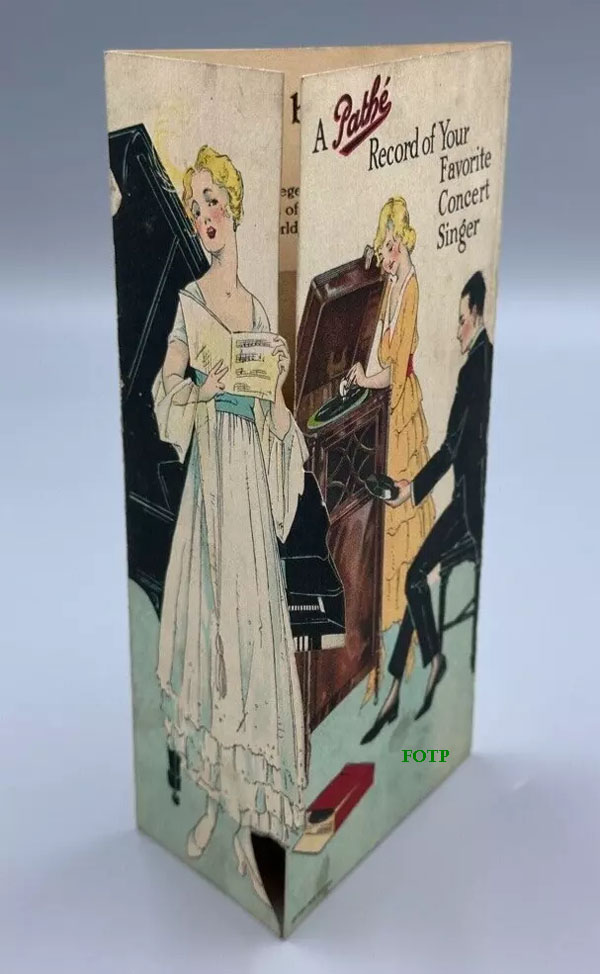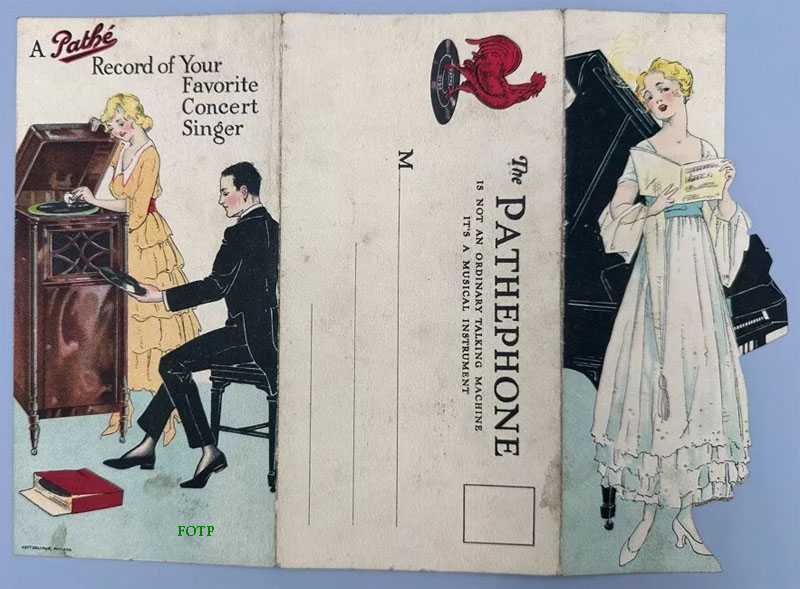The Pathephone Comes to America
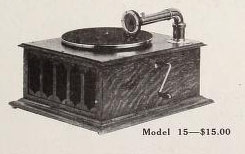 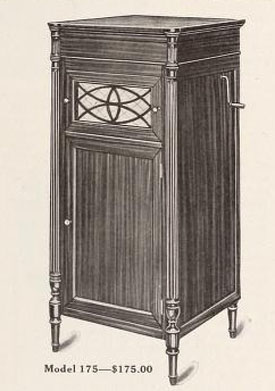
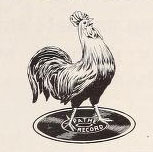
by Doug Boilesen, May 2024
The May 1914 issue of The Talking
Machine World noted that the Pathé Frères Phonograph
Company had leased the entire second floor of a new building in
New York. It was also pointed out that an announcement of its
usage would be made in the near future.
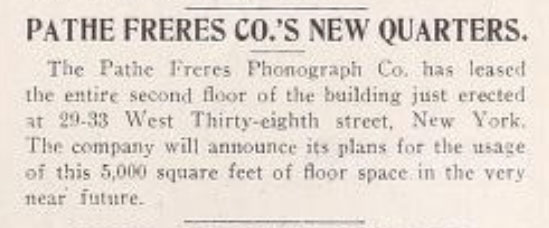
The Talking Machine
World, May 1914.
Pathé phonographs and records
had been imported into the United States under the American branch
of Pathé Frères which was incorporated in New York
in 1907 (Sutton, Allan, The Pathé-Perfect Discography,
Digital Version 2.0, ©2023). Their phonographs and records
were already sold in many countries around the world, but not
with its own dealers and jobbers in the United States.
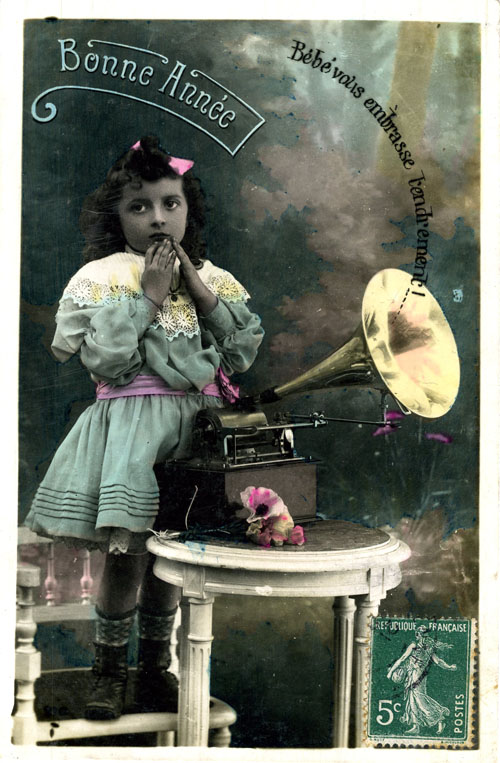
French Postcard c.1907
showing Pathé phonographs as part of Europe's popular culture.
(PM-0737)

Pathé in London,
The Talking Machine World, January 15, 1907.
In the October
1914 issue of The Talking Machine World the Pathé
Frères Phonograph Company announced to the trade that they
had opened offices in New York City where "we have our goods
on display and ready for examination and comparison."
"Our plan is to sell goods
in the usual way, through distributors and dealers. We shall
limit the number of jobbers, and shall be very judicious in
the selection and location of dealers. We
are now ready to receive the applications of jobbers and dealers
and solicit your visit and correspondence."
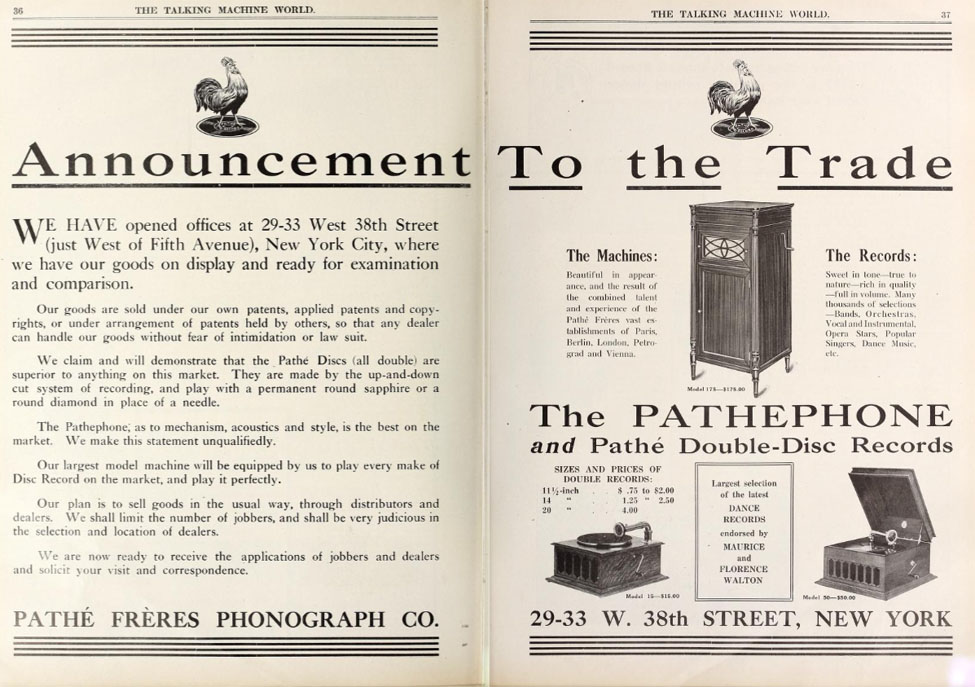
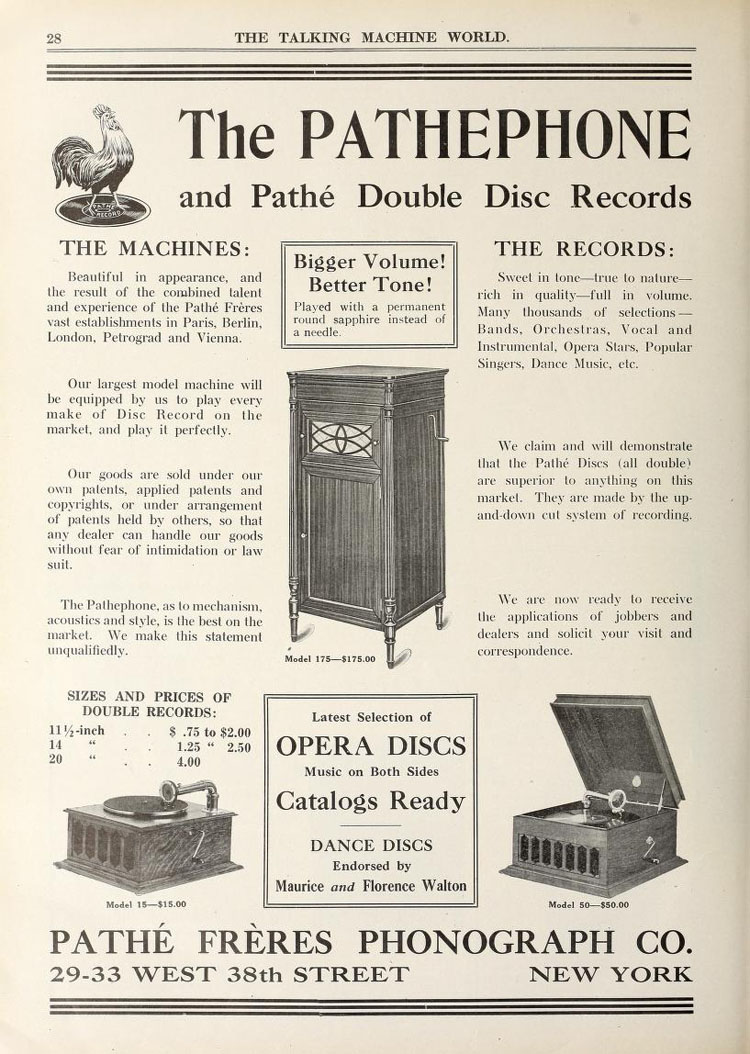
The Talking Machine World,
November 15, 1914.
The following May 1915 message to
the Phonograph Trade was a promotion of the Pathé Pathephone
model #200 and Pathé records. It also showed how Pathé
was progressing with developing their network of new agents and
Pathephone shops around the country.
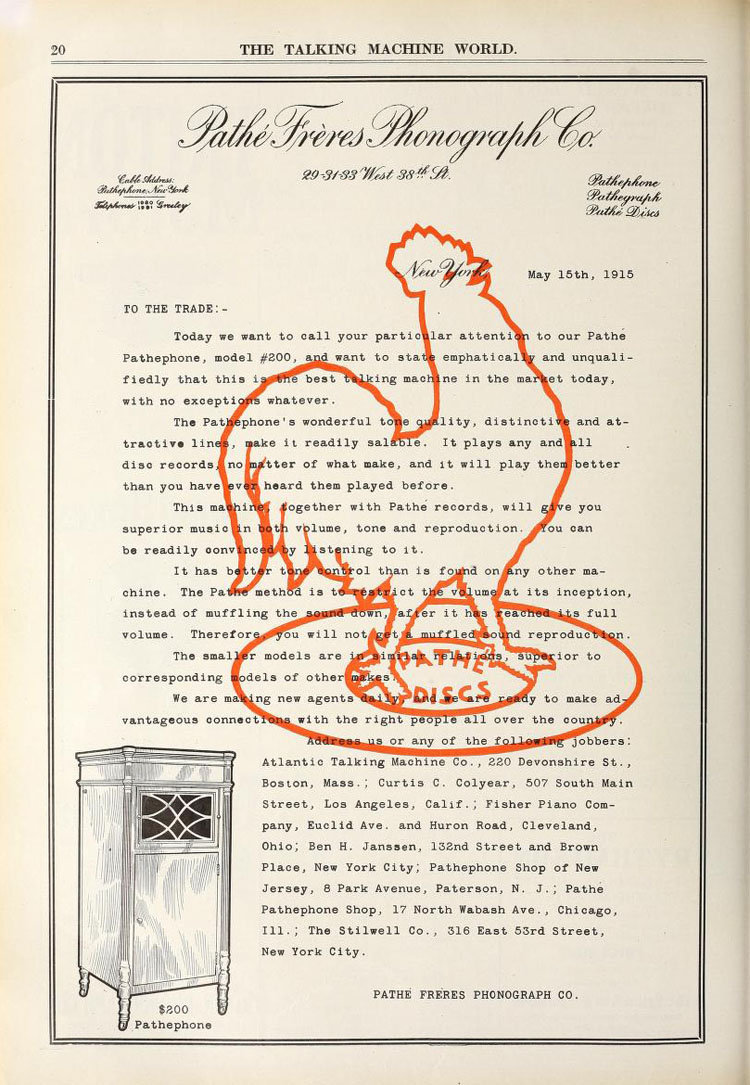
The Talking Machine World,
May 15, 1915 featuring the Model 200.
One of their early dealer ads in
the United States was their colored die-cut brochure featuring
the Pathephone Model 200 and the advertising theme of listening
to your favorite singer in your own home.
Pathephone's double-fold
brochure circa 1915 ready to open. (PM-2145)
The opened brochure
showed that it was also a mailer. (PM-2145)
The brochure's illustration
was later used on the above trade card for a Buffalo, New York
furniture store with a Progressive Pedro
tally sheet on its reverse side (PM-0198). Victor & Co. was
Buffalo's "Complete Home Furnishers" and was unaffiliated
with the Victor Talking Machine Co.

A later trade card
for Victor & Co. identified it as "Buffalo's Largest
Furniture Department Store" (circa 1930's). For a history
of Main, Genesee, and Pearl Street Blocks in Buffalo see Western
New York History As We Were.
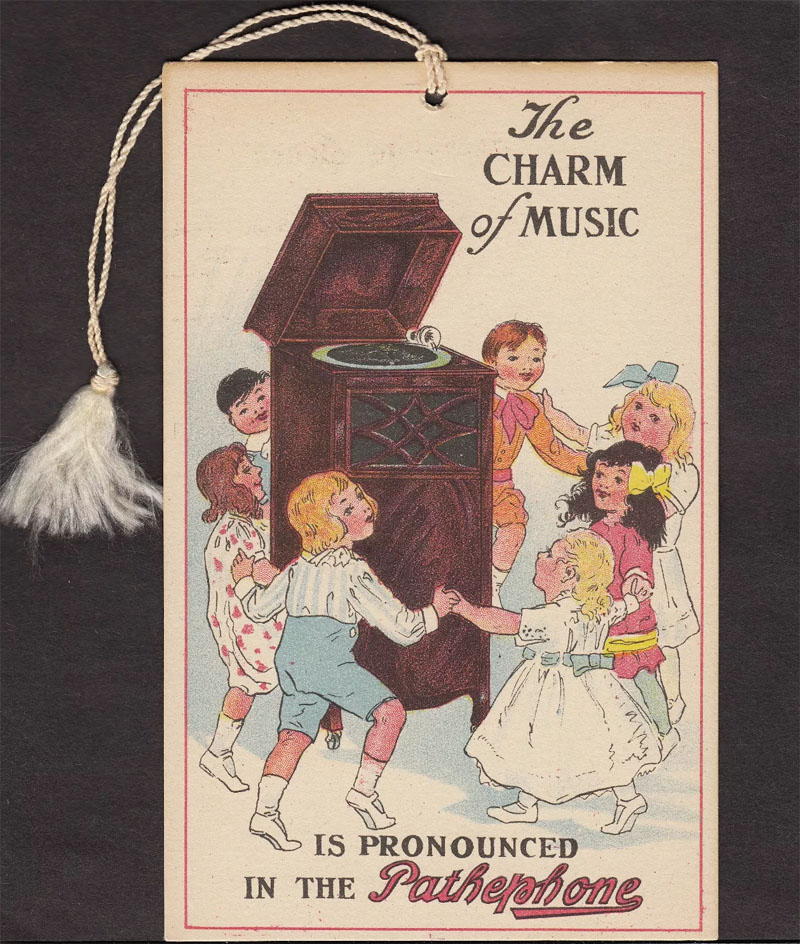
Pathephone "The
Charm of Music" trade card with Progressive Pedro
tally sheet on its reverse side (c. 1916).
The following Pathé
Frères Phonograph Company 1915 magazine ad used the advertising
theme of the living artist coming into your home. It's a foundational
theme seen in many Victor, Columbia and Edison ads which each
promoted the idea that anyone who owns a phonograph and records
can have entertainment previously limited by location, time, and
money. By owning a phonograph music could be heard anytime, anyplace
and by anyone. See Phonographia's "The
Stage of the World!" gallery for examples of how
recorded sound was promoted as being no less real than hearing
the greatest artists of the world in person.
Transported into your
home the artists sang with
"the art of the original singer or player -- in all the actual
shading and phrasing of the song or the composition." Into
your home was "the living artist" who could stir "your
very soul" with its realism and "magic spell."
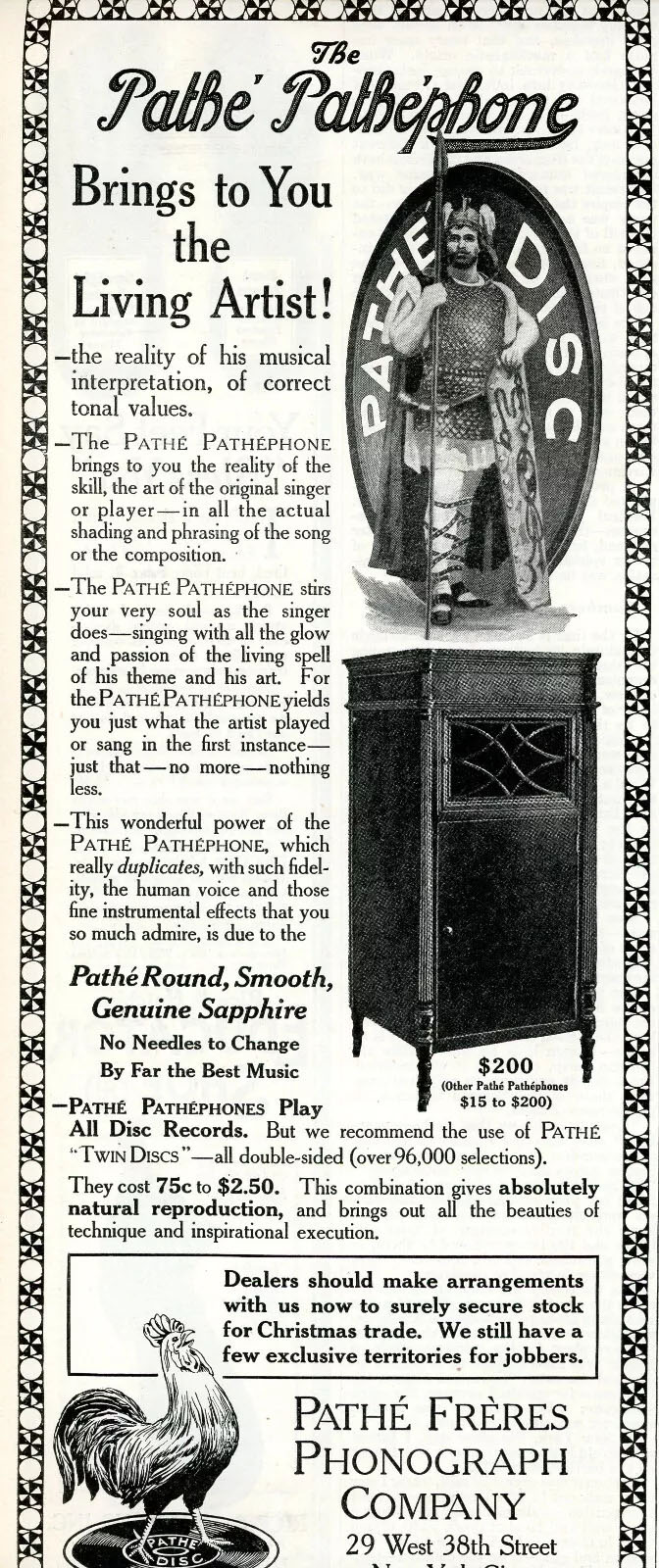
Pathé Frères
Phonograph Company ad, 1915. The
Pathephone "Brings to You the Living Artist!" ad also
advertised that Pathé was still looking for jobbers for
a few areas of the country.
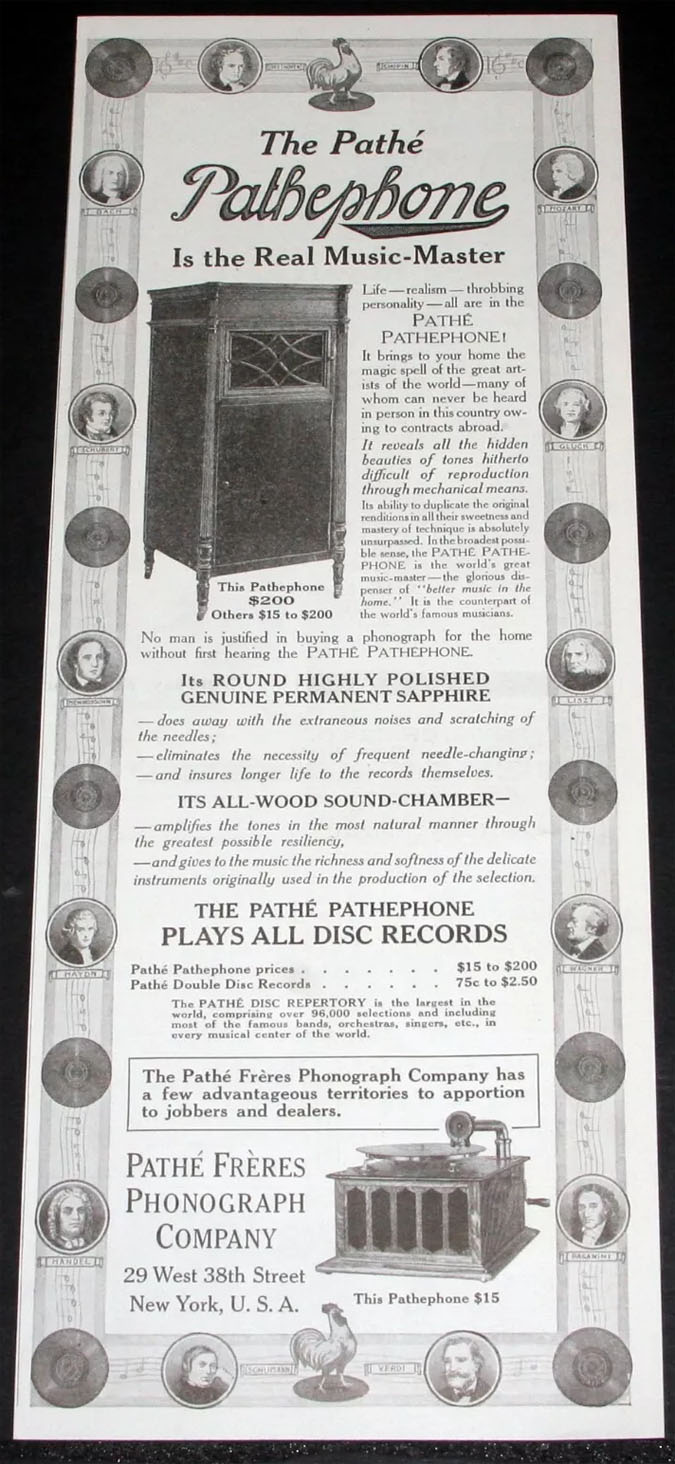
"Pathéphone
Is the Real Music-Master." "Life -- Realism, Throbbing
Personality...It brings to your home the magic spell of the greatest
artists of the world." Pathé Pathéphone,
magazine ad 1915.
"When you are
listening to the Pathéphone you actually seem to be
in the magnetic presence of the artist." "Life
Is a Search For Perfection." Pathé Pathéphone,
1915 (5" x 6" magazine ad).

The world's best music is "at
the Pathephone owner's instant command." The Saturday Evening
Post, December 11, 1915.
See Phonographia's
Pathé is Supreme
gallery for examples of Pathe's 1920 "Supremacy" advertising
campaign.
|
